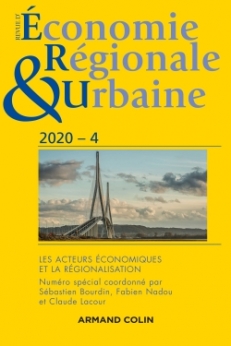
Revue d'économie régionale et urbaine (4/2020)
Pour acheter ce numéro, contactez-nous
Recevez les numéros de l'année en cours et accédez à l'intégralité des articles en ligne.
Les mutations du commerce international ont obligé les ports à se transformer et souvent à s’éloigner des villes. Cette distance spatiale participe d’une recomposition des territoires et de la gouvernance locale. L’étude des villes portuaires moyennes semble à ce titre particulièrement illustrative. La relation ville-port y est particulièrement forte. Les impacts réciproques des dynamiques territoriales et portuaires apparaissent avec davantage d’intensité lorsqu’on les compare à des villes portuaires plus importantes. Ainsi, les cas du Havre et Klaipeda (Lituanie) ont été retenus au regard de certaines similitudes et d’une valeur archétypale. Ces deux places portuaires ont fait l’objet d’une étude qualitative. Une vingtaine d’entretiens auprès des principaux acteurs (élus, représentants des autorités portuaires, directeurs d’entreprises de manutention, responsable de CCI, lobbyistes...) a permis d’éclairer la manière dont leurs jeux structurent les places portuaires et impactent le développement des territoires (portuaires, urbains, arrière-pays). Dès lors, la capacité des acteurs à adopter des comportements coopératifs au sein de configurations territoriales spécifiques apparaît comme un élément déterminant.
Changes undergone in international trade have forced ports to transform and move away from the city. This spatial distance contributes to a re-composition of territories and local governance. The study of medium-sized port cities is particularly illustrative in this respect. The port-city relationship is particularly strong. The mutual impacts of territorial and port dynamics seem more intense compared to larger port cities. Therefore, the cases of Le Havre and Klaipeda in Lithuania were selected regarding their similarities and an archetypal value. Le Havre and Klaipeda were analyzed using a qualitative study. More than twenty interviews were undertaken with the main stakeholders (elected officials, representatives of the port authorities, cargo handling company directors, Chamber of Commerce and Industry directors, trades unions and lobbyists, etc.), which helped to clarify the way in which the interplay between stakeholder’s structures port cities and impacts on the development of territories (port, urban or inland). This paper is part of a research-action program called "PORTERR - Ports and Territories" which aims to optimize and combine port and territorial development. Beyond a simple coexistence, the challenge lies in the creation of synergies benefiting both entities. The territory must form a resource in port economic development. Conversely, the port must participate in urban/regional development. The question is no longer to deal with two distinct processes, which would interact episodically and indirectly, but to identify the mechanisms of a mutual enhancement. Consequently, the ability of actors to adopt cooperative behaviors within specific territorial configurations seems to be a determining factor.

